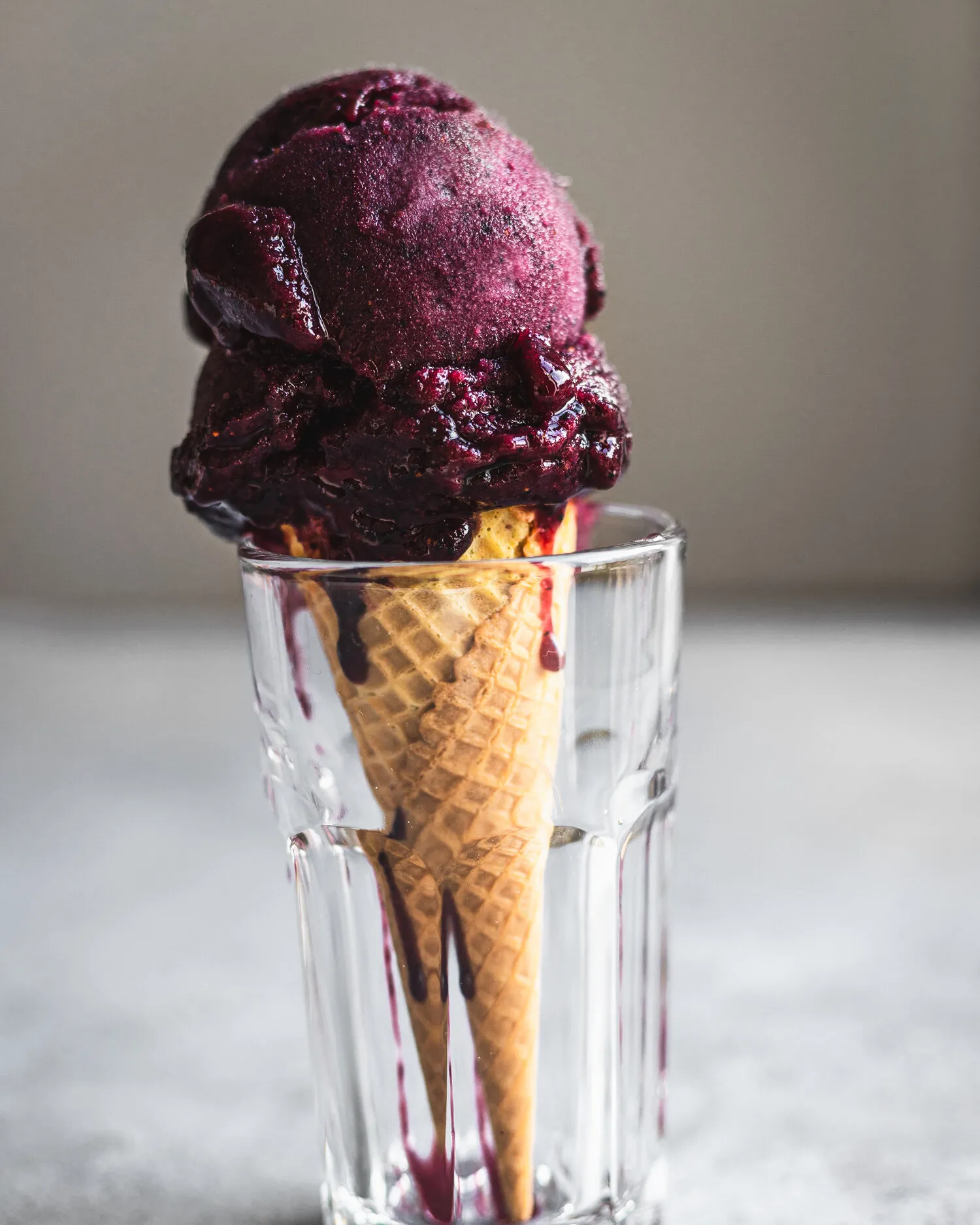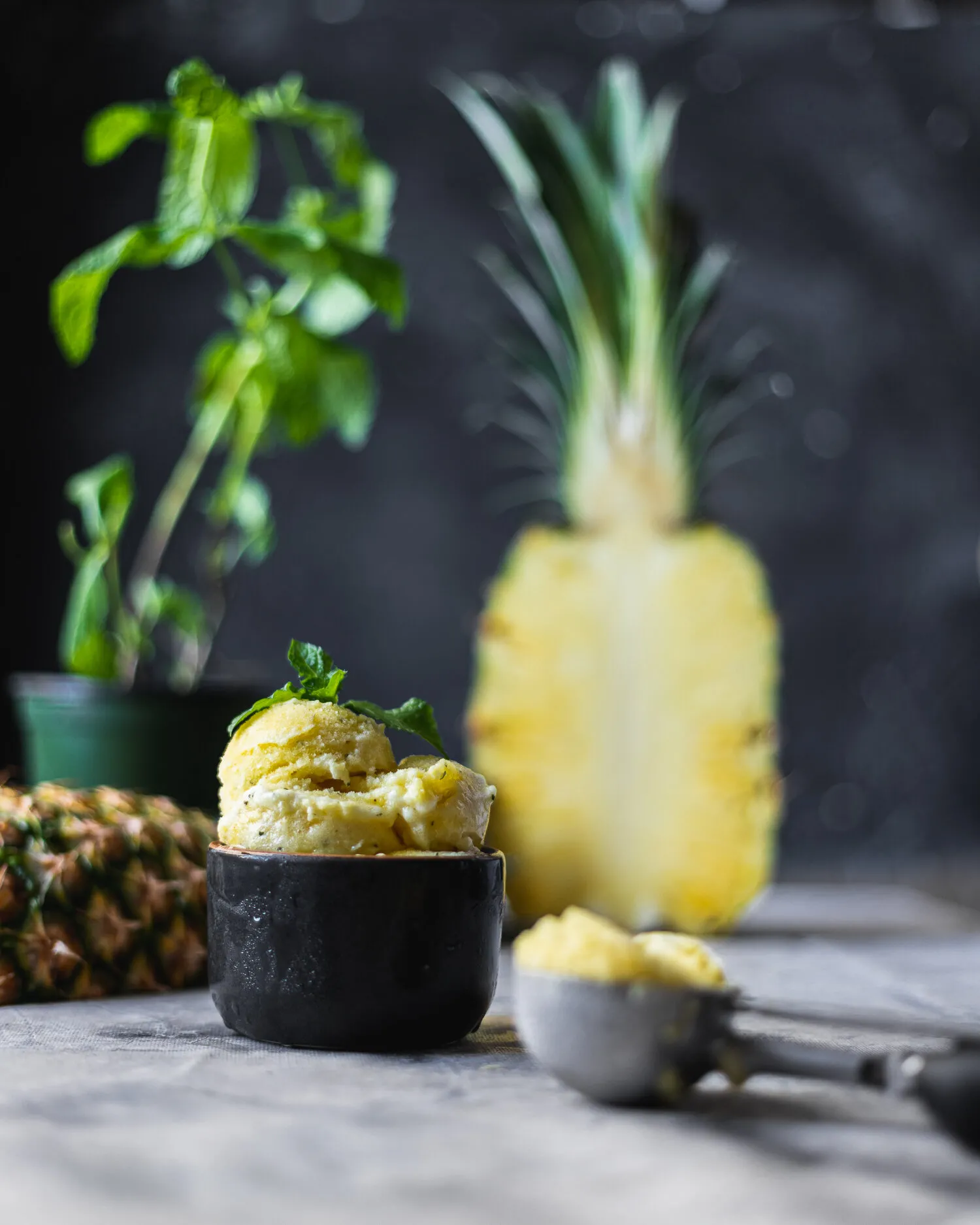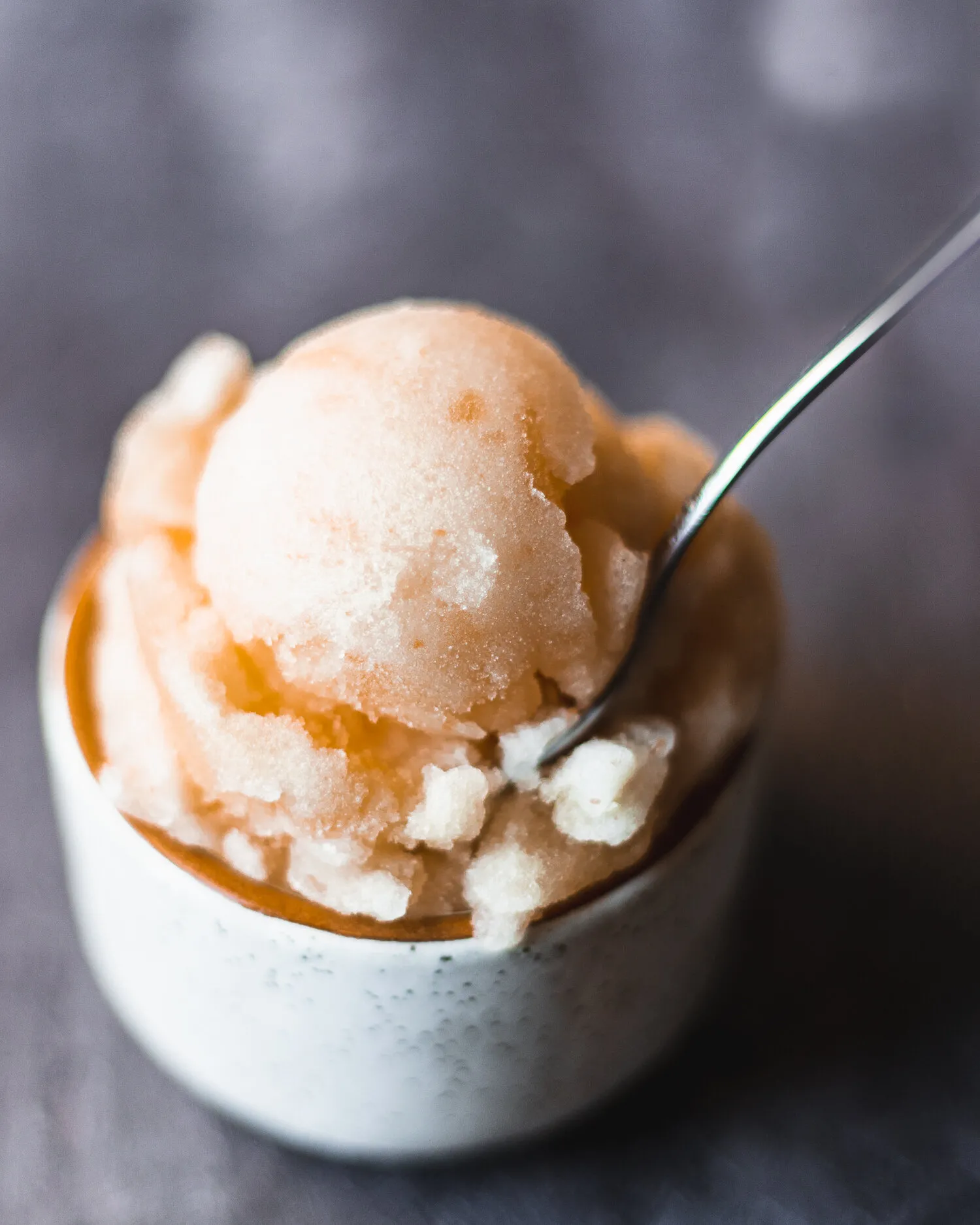Blog
How to Make Sorbet at Home: A Master Ratio and Guide

Hey there, fellow flavor enthusiasts! Robert Kline, your friendly neighborhood art aficionado, is here, but today, we’re diving into a different kind of art – the art of making delicious, refreshing sorbet right in your own kitchen!
Forget those store-bought pints; with a few simple ingredients and this comprehensive guide, you’ll be scooping up bowls of homemade goodness in no time. We’ll unlock the secrets of sorbet, from choosing the perfect fruit to mastering the art of churning. Get ready to impress your taste buds and discover the endless flavor possibilities that await!
The Allure of Sorbet: Ice Cream’s Dairy-Free Cousin
As a devoted frozen treat enthusiast, I’ve always been mesmerized by the smooth, creamy allure of ice cream. But over time, I’ve developed an equal fondness for its lighter, dairy-free cousin: sorbet.
What’s not to love? Sorbet is a symphony of pure, unadulterated fruit flavor, made with just a few simple ingredients. And the best part? You don’t need any fancy equipment or culinary wizardry to create magic in your own kitchen.
The Science of Sorbet: A Balancing Act of Sugar and Fruit
Before we embark on our sorbet-making adventure, let’s take a quick detour into the science behind this frozen delight.
Sorbet’s creamy texture relies on a delicate balance between sugar and fruit. Unlike ice cream, which gets its richness from fat, sorbet relies on the perfect sugar concentration to prevent it from turning into an icy block.
The magic ratio? Aim for 20-30% sugar in your sorbet base. But fear not, you don’t need a lab coat or a chemistry degree to get it right! We’ll cover a simple trick to test the sugar concentration later on.
The Art of Churning: A Necessary Indulgence
Okay, confession time: you’re going to need an ice cream maker for this one. I know, I know, it might seem like an extravagance, but trust me, it’s a worthy investment for any frozen treat aficionado.
Churning is what transforms your sorbet base from a liquid into the smooth, scoopable delight we all know and love. If you don’t have an ice cream maker, you can still enjoy the flavors of sorbet in the form of a refreshing granita, but more on that later.
Picking Your Perfect Fruit: Ripe, Juicy, and Bursting with Flavor
The star of the show in any sorbet is, without a doubt, the fruit! And when it comes to choosing your fruit, there’s one golden rule: the riper, the better.
Overripe fruit that’s a bit bruised is perfectly fine; in fact, it’s often more flavorful than its pristine counterparts. Here are a few tips for selecting the best fruit for your sorbet:
- Berries: Blend fresh or frozen berries until smooth, then strain to remove any seeds or skins.
- Melons: Blend cubed melon until smooth, then strain to achieve a silky texture.
- Citrus: Use freshly squeezed juice or bottled juice that’s 100% juice, not from concentrate.
- Stone Fruits: Leave the skins on for added tartness and blend until smooth.
- Pineapple: Peel, core, and blend until smooth, then strain to remove any fibrous bits.
- Pears and Apples: These fruits create a thick purée, so add some fruit juice or simple syrup to thin it out.
Pro Tip: Cooking some fruits, like peaches or strawberries, can intensify their flavor. Just keep in mind that cooked fruit will have less moisture, so you might need to adjust the amount you use.
Sweetening Your Sorbet: The Egg Test and Beyond
Now, let’s talk sugar. As we discussed earlier, the right sugar concentration is key to a perfectly textured sorbet. But how do you know if you’ve added enough?
Enter the “egg test” – a time-tested trick used by home cooks and pastry chefs alike.
Here’s how it works:
- Wash an uncooked egg thoroughly with soap and water.
- Gently place the egg in your sorbet base.
- If a portion of the egg about the size of a quarter peeks above the surface, you’re good to go!
- If the egg sinks to the bottom, add more sugar.
- If the egg floats completely on top, add more fruit purée or juice to thin it out.
Simple Syrup vs. Sugar: You can sweeten your sorbet with either granulated sugar or simple syrup (equal parts sugar and water, simmered until the sugar dissolves). While granulated sugar is often easier to incorporate, simple syrup can be helpful for fruits that produce a thick purée.
The Corn Syrup Conundrum: Although it often gets a bad rap, corn syrup can work wonders in sorbet. A small amount can improve the texture, especially when using thin fruit juices.
A Touch of Tartness: Balancing Sweetness with Acid
Once you’ve nailed the sweetness, it’s time to add a touch of tartness to round out the flavors and enhance the natural sweetness of your chosen fruit.
Citrus juices, like lemon or lime, are popular choices, but don’t be afraid to experiment with other acidic ingredients:
- Balsamic Vinegar: Adds a subtle tang, start with 1 tablespoon.
- Apple Cider Vinegar: Offers a sharper bite, start with 1 tablespoon.
- Wine Vinegars: Experiment with different varieties, starting with 1 tablespoon.
The amount of acid you use depends on the natural tartness of your fruit. For sweeter fruits, like melons, you’ll need more acid than for fruits that are already tart, like pineapples.
 In the Blueberry Orange Vanilla sorbet pictured, I used the juice and zest of one large navel orange, which was about 1/2 cup juice and 2 tablespoons of zest.
In the Blueberry Orange Vanilla sorbet pictured, I used the juice and zest of one large navel orange, which was about 1/2 cup juice and 2 tablespoons of zest.
Flavoring Your Sorbet: Unleash Your Inner Culinary Artist
Here’s where things get really exciting – customizing your sorbet with unique flavor combinations. This is your chance to let your culinary creativity run wild!
Consider adding:
- Flowers: Infuse a simple syrup with edible flowers, like rose petals or lavender buds.
- Herbs: Blend in fresh herbs, like mint or basil, or infuse a simple syrup with woody herbs, like rosemary or thyme.
- Zests: Add a burst of citrus flavor with lemon, lime, orange, or grapefruit zest.
- Spices: Incorporate ground spices, like cardamom or ginger, directly into the purée, or infuse whole spices into a simple syrup.
- Extracts and Alcohols: Enhance the flavor and soften the texture with a splash of alcohol (think Calvados for apple sorbet or Grand Marnier for orange sorbet) or a few drops of extract.
 Mint takes on a different flavor when cooked, so I used fresh mint blended right in with pineapple for this Pineapple Mint sorbet.
Mint takes on a different flavor when cooked, so I used fresh mint blended right in with pineapple for this Pineapple Mint sorbet.
The Master Sorbet Ratio: Your Recipe for Success
Ready to get started? Here’s the basic formula for sorbet success:
4 parts fruit purée/juice + 1 part sugar (by volume)
For every 4 cups of fruit purée or juice, use 1 cup of sugar. Remember, we’re talking volume, not weight, so use a measuring cup, not a scale. You’ll also need 2-4 tablespoons of acid and a pinch of salt.
Troubleshooting Your Sorbet: Tips and Tricks for Perfection
Even seasoned sorbet makers encounter the occasional hiccup. Here are a few common problems and how to fix them:
Problem: Sorbet is too soft or melty.
Solution: Melt it down, add more fruit purée or acid to reduce the sugar concentration, and re-churn.
Problem: Sorbet is rock-hard.
Solution: Let it soften on the counter for a few minutes before scooping, or melt it down, add a bit more sugar or corn syrup, and re-churn.
Problem: Sorbet is icy.
Solution: Melt it down, add more sugar or corn syrup, and re-churn, or churn the sorbet for a longer time.
Problem: Sorbet lacks flavor.
Solution: Make sure you’re using ripe, flavorful fruit. If the flavor is still lacking, melt the sorbet down, add more salt or acid, and re-churn.
 This green tea and grapefruit sorbet was very icy after the first churn and freeze, so I melted it back down, added more sugar, and churned it again for an improved texture.
This green tea and grapefruit sorbet was very icy after the first churn and freeze, so I melted it back down, added more sugar, and churned it again for an improved texture.
No Ice Cream Maker? Make Granita Instead!
Don’t let the lack of an ice cream maker deter you from enjoying frozen treats. Granita, a close relative of sorbet, is made without churning and offers a refreshingly icy texture.
To make granita, follow the same steps as for sorbet, but instead of churning, pour the base into a shallow dish and freeze it. Every 30 minutes, scrape the surface with a fork to break up ice crystals. Repeat this process several times until the granita is frozen through.
Embrace the Art of Homemade Sorbet
Making sorbet at home is an adventure in flavor exploration. With a little practice and a dash of creativity, you’ll be whipping up batches of this refreshing treat all year round. So grab your favorite fruits, unleash your inner artist, and get churning!
Don’t forget to share your sorbet masterpieces with me! Tag your creations with #RobertKlineArt on social media – I can’t wait to see what you come up with. And for more handcrafted inspiration, be sure to explore the unique creations on the Robert Kline Art website – perfect for adding a personal touch to your home or gifting to someone special.
